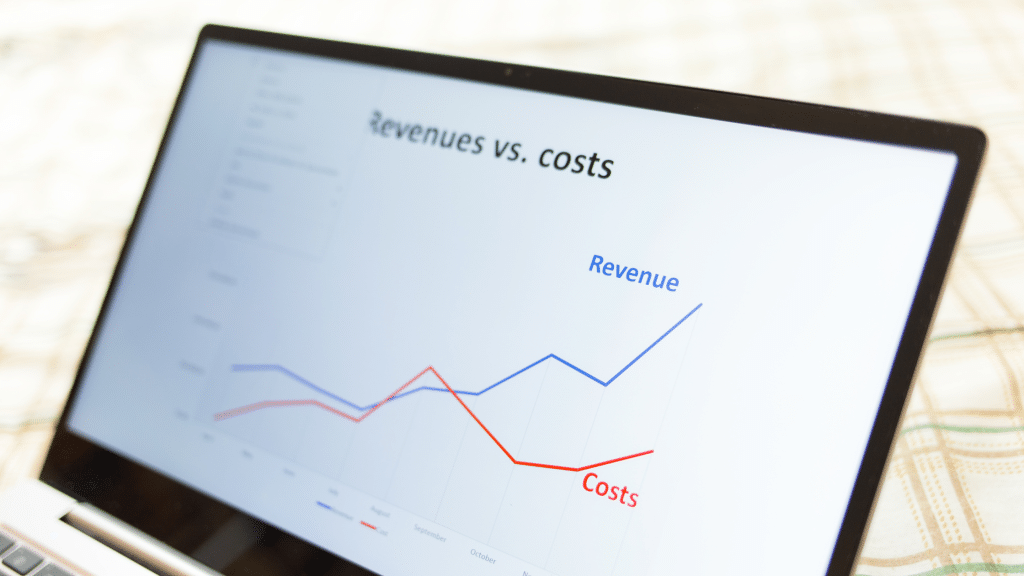Are you looking for ways to maximize the effectiveness of your advertising campaign? In today’s digital age, where data is abundant and technology is constantly evolving, it is essential to stay ahead of the game. That’s why predictive analytics can be a game-changer for optimizing your ad spend. By harnessing the power of predictive analytics, you can gain valuable insights into consumer behavior, tailor your advertising efforts, and ultimately boost your return on investment (ROI).
Understanding Predictive Analytics
Predictive analytics is a powerful technique that uses historical data and statistical algorithms to make predictions about future outcomes. In the realm of advertising, it plays a crucial role in enabling advertisers to anticipate and understand consumer behavior. By analyzing data from various sources such as social media, online interactions, and purchase history, advertisers can gain valuable insights into the preferences and habits of their target audience. These insights can then be used to optimize ad spend by delivering targeted and personalized advertisements to the right audience at the right time.
The Role of Predictive Analytics in Advertising
Predictive analytics has revolutionized the advertising industry by providing advertisers with the ability to make data-driven decisions that are more likely to yield positive results. By leveraging historical data and statistical algorithms, advertisers can forecast the success of future ad campaigns. This allows them to allocate their resources more effectively and make informed decisions about where to invest their advertising budget.
One of the key advantages of predictive analytics in advertising is its ability to anticipate and understand consumer behavior. By analyzing data from various sources, advertisers can gain insights into the preferences, interests, and habits of their target audience. This information is invaluable in designing effective advertising campaigns that resonate with consumers and drive engagement.
Furthermore, predictive analytics allows advertisers to optimize their ad spend by delivering targeted and personalized advertisements. By understanding the characteristics and preferences of their target audience, advertisers can tailor their messages to resonate with specific segments of the population. This not only increases the effectiveness of their campaigns but also minimizes wasteful spending on irrelevant audiences.
Key Components of Predictive Analytics
Predictive analytics consists of several key components that work together to provide valuable insights:
- Data Collection and Preparation: To leverage predictive analytics, you need to gather relevant and reliable data. This can include customer demographics, purchase history, website interactions, and more. Once the data is collected, it needs to be cleaned and prepared for analysis. This involves removing any inconsistencies or errors in the data and ensuring its accuracy and completeness.
- Statistical Models: Statistical models are the heart of predictive analytics. They are used to analyze the collected data and make predictions. Common models include regression analysis, decision trees, and neural networks. These models apply complex mathematical algorithms to identify patterns and relationships in the data, allowing advertisers to make accurate predictions about future outcomes.
- Algorithm Development: Algorithms are the backbone of predictive analytics. They are designed to process and interpret large volumes of data and generate insights. Developing effective algorithms requires a deep understanding of statistical techniques and programming skills. Advertisers often collaborate with data scientists and analysts to develop and fine-tune algorithms that are tailored to their specific needs.
- Validation and Testing: It’s important to validate and test the accuracy of predictive models. This involves comparing the predicted outcomes with actual outcomes to ensure their reliability. By validating the models, advertisers can gain confidence in their predictions and make more informed decisions based on the insights generated by predictive analytics.
By leveraging these key components, advertisers can harness the power of predictive analytics to gain a competitive edge in the advertising industry. The ability to anticipate consumer behavior, optimize ad spend, and make data-driven decisions can significantly enhance the effectiveness and efficiency of advertising campaigns.
Strategy 1: Leveraging Data for Targeted Advertising
Data is the foundation of predictive analytics and targeted advertising. By leveraging data, you can gain a deeper understanding of your target audience and create more precise ad campaigns. Graphite Note, a powerful no-code predictive and prescriptive analytics tool, can assist you in this endeavor. With its intuitive interface and advanced analytics capabilities, Graphite Note allows you to easily import and analyze your advertising data.
The Importance of Data in Predictive Analytics
Data is the fuel that powers predictive analytics. The more data you have, the more accurate and insightful your predictions will be. To optimize your ad spend using predictive analytics, you need to collect data from various sources, such as customer interactions, website analytics, and market research.
Customer interactions provide valuable insights into their preferences, behaviors, and purchasing patterns. By analyzing this data, you can identify trends and patterns that can guide your advertising strategies. For example, if you notice that a significant portion of your customers tend to make purchases on weekends, you can schedule your ads to appear more frequently during those times to maximize your chances of conversion.
Website analytics, on the other hand, offer a wealth of information about how visitors interact with your website. By tracking metrics such as bounce rate, time spent on page, and click-through rates, you can gain insights into the effectiveness of your landing pages and optimize them accordingly. If you find that a particular landing page has a high bounce rate, for instance, you can experiment with different designs or content to improve user engagement and increase conversions.
Market research is another valuable source of data for predictive analytics. By staying updated on industry trends, competitor strategies, and consumer preferences, you can make informed decisions about your advertising campaigns. For instance, if you discover that a new trend is emerging in your industry, you can quickly adapt your messaging and creative to capitalize on the opportunity and stay ahead of the competition.
How to Use Data for Ad Optimization
Once you have gathered the necessary data, you can use it to optimize your ad campaigns. By analyzing customer behavior and preferences, you can tailor your advertisements to resonate with your target audience. For example, if your data suggests that a certain demographic prefers video content over written content, you can allocate more of your ad spend towards video ads.
Segmentation is a powerful technique that allows you to divide your target audience into smaller, more homogeneous groups based on shared characteristics or behaviors. By segmenting your audience, you can create personalized ad campaigns that speak directly to each group’s specific needs and interests. For instance, if you have identified a segment of customers who are interested in outdoor activities, you can create ads that highlight your products’ durability and suitability for outdoor use.
A/B testing is another effective method for optimizing your ad campaigns using data. By creating multiple versions of your ads and testing them against each other, you can identify which variations perform better and make data-driven decisions about which ads to scale up. For example, you can test different headlines, images, or calls-to-action to determine which combination generates the highest click-through rates or conversions.
Furthermore, data can also help you optimize your ad targeting. By analyzing demographic, geographic, and behavioral data, you can identify the most relevant audiences for your products or services. For instance, if you are promoting a luxury skincare brand, you can use data to target individuals in higher income brackets who have shown an interest in beauty and wellness products.
In conclusion, leveraging data for targeted advertising is a powerful strategy that can significantly improve the effectiveness of your ad campaigns. By collecting and analyzing data from various sources, you can gain valuable insights into your target audience and optimize your ads to resonate with them. Graphite Note provides a user-friendly platform to import and analyze your advertising data, making it easier than ever to harness the power of data-driven advertising.
Strategy 2: Predictive Analytics for Budget Allocation
Allocating your advertising budget effectively is crucial for maximizing the impact of your campaigns. Predictive analytics can help you make informed decisions about where to allocate your ad spend for optimal results.
Understanding Budget Allocation in Advertising
When it comes to advertising, different channels and platforms yield different results. Predictive analytics can provide valuable insights into which channels are likely to generate the highest return on investment. By analyzing historical data and market trends, you can allocate your budget to the channels that are most likely to reach your target audience and drive conversions.
Optimizing Budget Allocation with Predictive Analytics
Graphite Note can assist you in optimizing your budget allocation by providing accurate predictions based on historical data. By analyzing the performance of different advertising channels, Graphite Note can help you determine the most cost-effective channels for reaching your target audience. Additionally, Graphite Note can provide recommendations on budget allocation based on predicted outcomes, ensuring that your ad spend is allocated in the most effective way.
Strategy 3: Enhancing Ad Performance with Predictive Modeling
Predictive modeling is a powerful tool for enhancing ad performance. By using historical data and predictive analytics, you can identify patterns and trends that can help you optimize your ad content and placement.
The Concept of Predictive Modeling
Predictive modeling involves using statistical algorithms to make predictions about future outcomes. In the context of advertising, predictive modeling can help you identify which ad formats, creative elements, and placement strategies are most likely to resonate with your target audience.
Improving Ad Performance through Predictive Modeling
By leveraging predictive modeling, you can continuously improve the performance of your ads. Graphite Note’s no-code predictive analytics capabilities allow you to easily build and deploy predictive models without the need for extensive coding knowledge. With Graphite Note, you can experiment with different variables and scenarios to identify the optimal combination for maximum ad performance.
Strategy 4: Predictive Analytics for Customer Segmentation
Effective customer segmentation can greatly enhance the effectiveness of your ad campaigns. By dividing your target audience into distinct segments based on their characteristics and behaviors, you can deliver highly targeted advertisements that are more likely to resonate with each segment.
The Role of Customer Segmentation in Advertising
Customer segmentation enables you to tailor your ads to specific groups of people who share similar characteristics and preferences. By delivering personalized content to each segment, you can increase engagement and conversion rates. Predictive analytics can aid in the process of customer segmentation by identifying patterns and similarities in customer data.
Using Predictive Analytics for Effective Customer Segmentation
With Graphite Note’s powerful predictive analytics capabilities, you can analyze customer data to uncover valuable insights for effective customer segmentation. By identifying key attributes and behaviors that differentiate your customers, you can create more personalized ad campaigns that resonate with each segment. Graphite Note’s no-code approach makes it easy for marketers and advertisers to leverage predictive analytics for customer segmentation, without the need for extensive data science knowledge.
Conclusion
Predictive analytics is a game-changer for optimizing ad spend. By leveraging the power of data and advanced analytics techniques, you can gain valuable insights into consumer behavior, optimize your budget allocation, enhance ad performance, and effectively segment your target audience. Tools like Graphite Note provide the necessary capabilities to harness the power of predictive analytics without the need for extensive coding knowledge. Start leveraging predictive analytics today and take your advertising campaigns to new heights of success.




